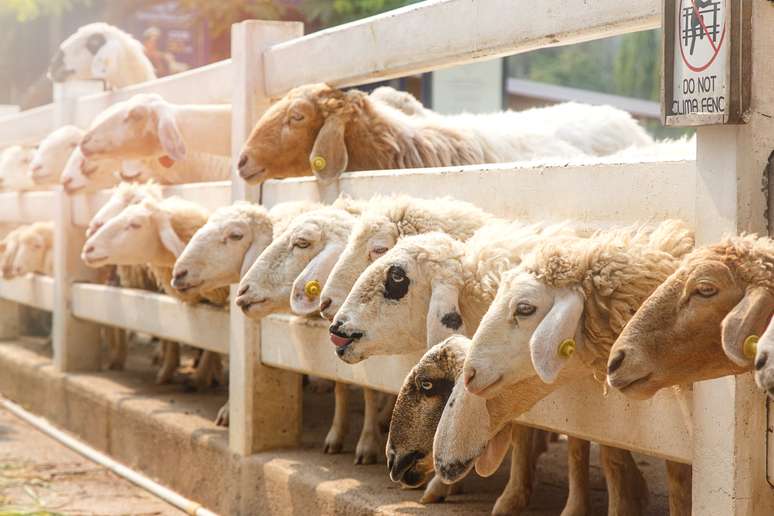Business Lists and Databases Available for Marketing and Research - Direct Mailing Emailing Calling
NAICS Code 112410 - Sheep Farming
Government Level - NAICS 6-Digit - Updated to 2022 NAICSBusiness Lists and Databases Available for Marketing and Research
Business List Pricing Tiers
| Quantity of Records | Price Per Record | Estimated Total (Max in Tier) |
|---|---|---|
| 0 - 1,000 | $0.25 | Up to $250 |
| 1,001 - 2,500 | $0.20 | Up to $500 |
| 2,501 - 10,000 | $0.15 | Up to $1,500 |
| 10,001 - 25,000 | $0.12 | Up to $3,000 |
| 25,001 - 50,000 | $0.09 | Up to $4,500 |
| 50,000+ | Contact Us for a Custom Quote | |
What's Included in Every Standard Data Package
- Company Name
- Contact Name (where available)
- Job Title (where available)
- Full Business & Mailing Address
- Business Phone Number
- Industry Codes (Primary and Secondary SIC & NAICS Codes)
- Sales Volume
- Employee Count
- Website (where available)
- Years in Business
- Location Type (HQ, Branch, Subsidiary)
- Modeled Credit Rating
- Public / Private Status
- Latitude / Longitude
- ...and more (Inquire)
Boost Your Data with Verified Email Leads
Enhance your list or opt for a complete 100% verified email list – all for just $0.10 per email!
NAICS Code 112410 Description
This industry comprises establishments primarily engaged in raising sheep and lambs, or feeding lambs for fattening. The sheep or lambs may be raised for sale or wool production. Source: Census.gov - NAICS 2022 compliant
NAICS Code 112410 - Sheep Farming is a final level code of the “Agriculture, Forestry, Fishing and Hunting” Sector. There are 126 companies verified as active in this industry in the USA.
SBA Size Standard
Annual Revenue Limit of $1,000,000Parent Category - 5-digit Level (less specific)
Marketing: NAICS Codes (8-digit) for Sheep Farming
Access In-depth Industry Analysis: Reach out to companies and executives within these industries.
Industry Examples of NAICS 112410
Common types of examples within NAICS Code 112410 - Sheep Farming are:
- Dairy sheep farming
- Feedlots (except stockyards for transportation), lamb
- Lamb feedlots (except stockyards for transportation)
- Milking dairy sheep
- Sheep farming (e.g., meat, milk, wool production)
Industry Image
Example photo for industry NAICS 112410 - Sheep Farming. This image represents an activity or product found in this industry.

Cross-References
Industry Executives
Would you like to email executives in NAICS Code 112410 - Sheep Farming? Below are some of the common job titles available to be targeted.
- Business Development
- Chairman
- C-Level
- Director
- Engineering
- Executive Director
- Facilities
- Finance
- Human Resource
- IT
- Manager
- Marketing
- Manufacturing
- Operations
- Owner
- Partner
- President
- Principal
- Purchasing
- Sales
- Vice President
For specific job title targeting, please provide details in the business list request form.
USA Import, Export, and Balance of Trade
Import (USD)
$5,861,952Export (USD)
$20,618,424Balance of Trade (USD)
$14,756,472Top Countries by U.S. Imports
| Australia | $4,345,579 |
| Canada | $575,401 |
| South Africa | $551,333 |
| Spain | $305,707 |
| India | $69,028 |
Top Countries by U.S. Exports
| China | $12,136,333 |
| Bulgaria | $1,518,013 |
| India | $1,456,647 |
| Egypt | $1,324,637 |
| Mexico | $1,140,200 |
Countries With Highest Trade Surplus
| China | $12,136,333 |
| Bulgaria | $1,518,013 |
| India | $1,387,619 |
| Egypt | $1,324,637 |
| Mexico | $1,140,200 |
Countries With Highest Trade Deficit
| Australia | -$4,345,579 |
| Canada | -$532,079 |
| South Africa | -$439,997 |
| Spain | -$305,707 |
| Turkey | -$11,000 |
U.S. Total Import value for NAICS Code 112410 is $5,861,952. Australia, Canada, and South Africa accounted for the top imports of Sheep & Wool in 2018.
U.S. Total Export value for this industry is $20,618,424. China, Bulgaria, and India accounted for the top exports of Sheep & Wool in 2018.
Questions & Answers
-
What is the SBA NAICS 112410 revenue limit?
Businesses with an annual revenue under $1,000,000 are considered small businesses by SBA.
-
How many active businesses operate in NAICS Code 112410?
There are 126 verified business locations operating primarily in this industry.